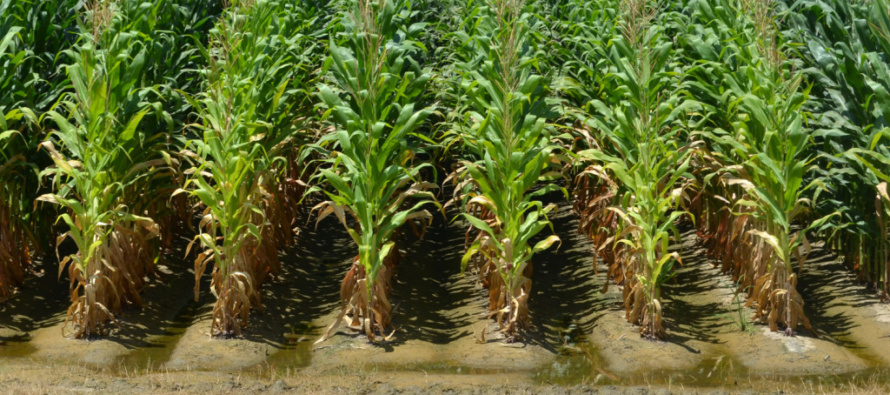How much Nitrogen have I Lost from Saturated Soils?

 Persistent rain and saturated soils have generated concern about nitrogen fertilizer loss. Nitrogen fertilizer is subject to considerable loss from excessive rainfall and wet, saturated soils. The loss resulting from saturated conditions and flooding occurs primarily through denitrification, particularly in heavy textured soils. Denitrification occurs when nitrate nitrogen is converted into nitrogen gas by microorganisms and escapes into the air. Two to three days of saturation are required for the process to begin.
Persistent rain and saturated soils have generated concern about nitrogen fertilizer loss. Nitrogen fertilizer is subject to considerable loss from excessive rainfall and wet, saturated soils. The loss resulting from saturated conditions and flooding occurs primarily through denitrification, particularly in heavy textured soils. Denitrification occurs when nitrate nitrogen is converted into nitrogen gas by microorganisms and escapes into the air. Two to three days of saturation are required for the process to begin.
The amount of nitrogen loss is very difficult to predict, and depends upon many factors. The primary factors affecting loss are fertilizer application timing, nitrogen source, and quantity applied, relative to the duration of saturated conditions and soil temperatures during this time. Essentially, seasonal nitrogen loss can be quite high, if a lot of nitrogen is exposed to numerous days of saturated conditions, particularly when soil temperatures are warm – in other words, early nitrogen application increases potential loss. This is why we strongly advocate applying nitrogen fertilizer to corn using split application methodology.
 Warm soil temperatures accelerate the denitrification process. Research indicates denitrification rates range from 2-3% per day at soil temperatures from 55-65 F or 4-5% per day if soil temperatures exceed 65 F. This loss does not start until a few days after soils are saturated when bacteria initiates denitrification.
Warm soil temperatures accelerate the denitrification process. Research indicates denitrification rates range from 2-3% per day at soil temperatures from 55-65 F or 4-5% per day if soil temperatures exceed 65 F. This loss does not start until a few days after soils are saturated when bacteria initiates denitrification.
Timing of nitrogen application and nitrogen source affect the amount of applied nitrogen that will be in the nitrate form. This is important, because only the portion of nitrogen fertilizer present in the nitrate form is subject to denitrification. The following table estimates percentage of fertilizer present in the nitrate form for different nitrogen sources depending upon the time after application (adopted from “Evaluating Flood Damage in Corn,” Lee et al., Univ. of Kentucky, AGR-193).
| Nitrogen Source |
Weeks After Application |
||
|
0 |
3 |
6 |
|
|
% of NO3-N |
|||
| Urea |
0 |
50 |
75 |
| Urea (with N Serve) |
0 |
30 |
70 |
| UAN (28 and 32%) |
25 |
60 |
80 |
For example, if you applied 240 pounds/a of N as UAN (32%) three weeks before the field became saturated and soil temperatures were about 60 degrees F, about 120 pounds N (240 x 60%) are present in the nitrate form. Each day of saturation after the initial two days results in an approximate nitrogen loss of about 5.8 lbs. of N per day (144 x 4%). Thus, if this field has been completely saturated for about 12-14 days, then anticipated N loss would be about 60-70 lbs./a.
If your conditions warrant a supplemental application, you likely do not need to match the estimated loss value, because your crop will use the fertilizer more efficiently, compared to an early season application. This is because our nitrogen rate goals (1.3 lbs. N / bu. of corn yield goal) include some latitude for nitrogen loss associated with normal Mid-South rainfall and environmental conditions. A supplemental nitrogen application near tassel should be used more efficiently by the crop, because it will have less exposure to potential in-season loss. High yielding corn often produces 1.0 bushel per pound of N when grown under environmental conditions and fertilizer application systems optimal for nitrogen utilization.




Let me tell You a sad story ! There are no comments yet, but You can be first one to comment this article.
Write a comment